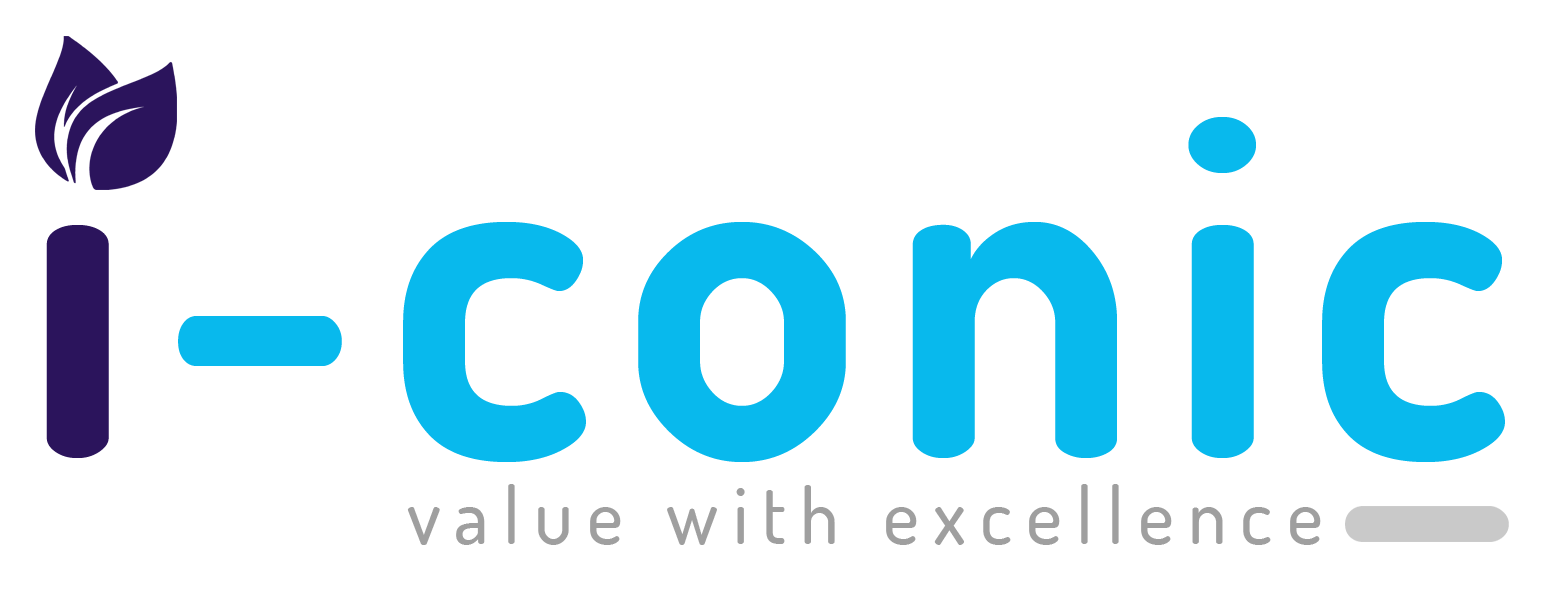Medical coding serves as the backbone of healthcare revenue cycle management, transforming complex medical procedures, diagnoses, and services into standardized codes that drive billing accuracy and financial success. With the global medical coding market valued at $23.2 billion in 2024 and projected to reach $71.47 billion by 2030 at a CAGR of 10.22%, understanding this critical healthcare function has never been more important for organizations seeking to optimize their revenue streams.
The healthcare industry’s increasing complexity, coupled with evolving regulatory requirements, makes professional medical coding expertise essential for sustainable financial performance. Whether you’re exploring in-house capabilities or considering outsourcing solutions, this comprehensive guide addresses the fundamental questions healthcare leaders need answered.
Understanding Medical Coding
What Does Coding Mean in Medical Terms?
Medical coding is the systematic process of translating healthcare diagnoses, procedures, medical services, and equipment into universal medical alphanumeric codes. These codes serve as a standardized language that enables healthcare providers, insurance companies, and government agencies to communicate efficiently about patient care and billing.
The primary purposes of medical coding include:
- Revenue Generation: Ensuring accurate reimbursement for services provided
- Compliance Management: Meeting regulatory requirements and avoiding penalties
- Data Analytics: Supporting healthcare research and population health initiatives
- Quality Reporting: Enabling performance measurement and improvement initiatives
Professional medical coders review clinical documentation from physicians, nurses, and other healthcare providers, then assign appropriate codes based on established classification systems. This process requires extensive knowledge of medical terminology, anatomy, physiology, and coding guidelines.
To ensure this standardized communication works effectively across the healthcare ecosystem, the industry relies on several established classification systems, each serving specific purposes in the coding process.
Core Medical Coding Classification Systems
What is CPT?
Current Procedural Terminology (CPT) codes represent the gold standard for describing medical, surgical, and diagnostic procedures performed by healthcare providers. Developed and maintained by the American Medical Association (AMA), CPT codes consist of five-digit numeric codes that describe specific services and procedures.
Key CPT Categories:
- Category I Codes: Procedures and services commonly performed (e.g., 99213 for office visits)
- Category II Codes: Performance measurement and quality reporting
- Category III Codes: Emerging technologies and experimental procedures
CPT codes are updated annually to reflect advances in medical technology and practice, making ongoing education essential for coding professionals.
While CPT codes effectively cover most physician services and procedures, healthcare organizations often encounter situations where additional coding systems are needed to capture the full scope of services, equipment, and supplies provided to patients.
What is HCPCS in Medical Coding?
The Healthcare Common Procedure Coding System (HCPCS) provides a comprehensive coding framework that extends beyond CPT codes to include supplies, equipment, and services not covered in the CPT system. HCPCS operates on two levels:
-
- HCPCS Level I: Identical to CPT codes, covering physician services and procedures
- HCPCS Level II: Alphanumeric codes (A-V series) covering:
- Durable medical equipment (DME)
- Prosthetics and orthotics
- Ambulance services
- Medications and supplies
HCPCS Level II Code Examples
Understanding HCPCS Level II codes is crucial for comprehensive medical billing:
- A4100: Skin substitute, FDA cleared as a device
- E0114: Crutches, underarm, wood, adjustable or fixed, pair
- J1100: Injection, dexamethasone sodium phosphate, 1mg
- L3806: Wrist hand finger orthosis (WHFO), includes one or more nontorsion joints
- V2020: Frames, purchases
These codes ensure proper billing for equipment, supplies, and specialized services that fall outside traditional CPT coverage.
With these coding systems forming the foundation of healthcare revenue, many healthcare professionals often wonder about the distinction between the coding process itself and the subsequent billing activities that depend on accurate code assignment.
What is the difference between CPT and ICD-10 codes?
CPT codes describe WHAT medical service was performed, while ICD-10 codes describe WHY the service was necessary. CPT codes are 5-digit numbers (like 99213) that identify procedures, treatments, and services for billing purposes. ICD-10 codes are 3-7 character alphanumeric codes (like E11.9) that identify patient diagnoses, symptoms, and medical conditions. Both codes are required on medical claims – ICD-10 codes justify medical necessity while CPT codes describe the billable services provided.
Medical Billing vs. Medical Coding
What is the Difference Between Medical Billing and Coding?
While often confused, medical billing and coding represent distinct but interconnected processes in healthcare revenue cycle management:
Medical Coding focuses on:
- Analyzing clinical documentation
- Assigning appropriate diagnostic and procedure codes
- Ensuring coding accuracy and compliance
- Supporting quality reporting initiatives
Medical Billing encompasses:
- Creating and submitting insurance claims
- Following up on claim denials and rejections
- Managing patient billing and collections
- Coordinating with insurance companies
The relationship between these functions is sequential: accurate coding provides the foundation for successful billing, while effective billing processes ensure revenue realization from coded services.
As healthcare organizations recognize the critical importance of accurate coding, they increasingly seek professionals with specialized expertise and formal credentials to handle these complex responsibilities.
Specialized Medical Coding Roles and Certifications
What is a Pro Fee Coder?
Professional fee coders specialize in coding physician services, outpatient procedures, and professional healthcare services. Unlike facility coders who focus on inpatient hospital services, pro fee coders work with:
- Physician office visits and consultations
- Outpatient surgical procedures
- Diagnostic testing and imaging
- Specialist consultations and treatments
Pro fee coding requires expertise in evaluation and management (E/M) coding guidelines, procedural coding, and modifier usage to ensure accurate representation of physician services.
Given the specialized nature of professional fee coding and the need for healthcare organizations to verify competency, industry-standard certifications have become essential credentials for coding professionals.
What is Medical Billing and Coding Certification?
Professional certification validates medical coding expertise and demonstrates commitment to industry standards. Major certifying organizations include:
AAPC (American Academy of Professional Coders):
- CPC (Certified Professional Coder)
- CCS-P (Certified Coding Specialist-Physician-based)
AHIMA (American Health Information Management Association):
- CCS (Certified Coding Specialist)
- RHIA (Registered Health Information Administrator)
CPC Meaning and Significance
The Certified Professional Coder (CPC) credential represents the most widely recognized certification in professional fee coding. CPC certification demonstrates proficiency in:
- CPT and HCPCS coding systems
- ICD-10-CM diagnostic coding
- Medical terminology and anatomy
- Compliance and regulatory requirements
With over 190,000 CPC-certified professionals nationwide, this certification provides career advancement opportunities and higher earning potential in the medical coding field.
As healthcare evolves toward value-based care and risk-based contracts, coding professionals must master increasingly sophisticated concepts that go beyond traditional fee-for-service coding models.
Advanced Medical Coding Concepts
What is HCC in Medical Coding?
Hierarchical Condition Categories (HCC) represent a sophisticated risk adjustment system used primarily in Medicare Advantage and Accountable Care Organization (ACO) contracts. HCC coding focuses on:
- Risk Adjustment: Calculating payment rates based on patient acuity and health status
- Chronic Disease Management: Identifying and tracking complex medical conditions
- Quality Metrics: Supporting value-based care initiatives and outcomes reporting
HCC coding requires deep clinical knowledge and understanding of complex medical conditions, making it one of the most specialized areas in medical coding.
The growing complexity of HCC coding and risk adjustment has created a specialized market of companies that focus exclusively on helping healthcare organizations navigate these challenging requirements.
When Do You Need HCC Coding vs. Standard Coding?
Not all healthcare encounters require the same coding approach. Standard coding (ICD-10, CPT, HCPCS) is used for routine physician services, hospital visits, procedures, and medical supplies. However, Hierarchical Condition Category (HCC) coding comes into play when:
- The patient population includes Medicare Advantage members or ACO participants, where reimbursement depends on risk adjustment.
- Chronic and complex conditions such as diabetes, COPD, heart failure, and cancer need to be captured for accurate payment and quality tracking.
- Organizations are participating in value-based care programs, where coding directly impacts performance metrics and reimbursement rates.
What is a superbill and when is it used?
A superbill is a standardized billing document that captures patient visit information for medical coding and billing. Also called an encounter form, it contains pre-printed diagnosis codes (ICD-10), procedure codes (CPT), patient demographics, and provider information. Superbills are used in primary care practices, specialty clinics, urgent care centers, and small medical offices to streamline billing processes, reduce coding errors, and ensure all billable services are captured during patient encounters.
The Role and Responsibilities of Medical Coders
What Do Medical Coders Do?
Medical coders serve as essential links between clinical care and healthcare finance, performing critical functions that impact organizational success:
Primary Responsibilities:
- Review and analyze medical documentation
- Assign accurate diagnostic and procedure codes
- Ensure compliance with coding guidelines and regulations
- Support quality reporting and performance measurement
- Collaborate with healthcare providers to clarify documentation
Daily Activities Include:
- Processing medical records and encounter forms
- Researching coding guidelines and updates
- Communicating with physicians about documentation requirements
- Quality assurance and audit preparation
- Continuing education and professional development
The Bureau of Labor Statistics projects 7% growth in medical records and health information positions between 2021 and 2031, reflecting the continued importance of skilled coding professionals.
Given the growing demand for medical coding expertise and the challenges of recruiting and retaining qualified professionals, many healthcare organizations are exploring outsourcing as a strategic solution to meet their coding needs while controlling costs and ensuring quality.
Medical Coding Outsourcing
The complexity of modern medical coding, combined with staffing challenges and regulatory updates, has driven many healthcare organizations toward outsourcing solutions. Medical coding outsourcing can reduce billing errors from 90% to below 5% and prevent up to 90% of claim denials when implemented effectively.
Key Benefits of Medical Coding Outsourcing:
- Cost Optimization: Eliminate overhead costs associated with hiring, training, and retaining coding staff while reducing infrastructure investments
- Expertise Access: Leverage certified coding professionals with specialized knowledge in multiple medical specialties and coding systems
- Scalability: Adjust coding capacity based on volume fluctuations without the constraints of fixed staffing models
- Technology Integration: Access advanced coding software, automation tools, and analytics platforms without capital investment
- Compliance Assurance: Maintain current knowledge of coding updates, regulatory changes, and audit requirements
With numerous outsourcing providers in the market, healthcare organizations must carefully evaluate potential partners to ensure they select a company that can meet their specific needs and quality standards.
Selecting the Right Medical Coding Partner
When evaluating medical coding outsourcing companies, healthcare organizations should prioritize:
- Certification and Expertise: AAPC and AHIMA certified coders with relevant specialty experience
- Technology Infrastructure: Advanced coding platforms, quality assurance systems, and reporting capabilities
- Compliance Framework: HIPAA compliance, data security measures, and audit trail capabilities
- Performance Metrics: Demonstrated accuracy rates, turnaround times, and denial reduction statistics
- Industry Experience: Proven track record with similar healthcare organizations and specialties
As healthcare organizations make these strategic decisions about coding operations, it’s important to understand the broader market trends and technological developments that are shaping the future of the medical coding industry.
I-Conic Solutions exemplifies these qualities with certified coding professionals, cutting-edge technology platforms, and a proven track record of reducing claim denials while maintaining 99%+ accuracy rates for healthcare clients across multiple specialties.
How to Choose Between In-House vs. Outsourced Coding?
Healthcare organizations often face the decision of whether to build internal medical coding teams or partner with outsourcing companies. Each approach carries distinct advantages and challenges.
| Criteria | In-House Coding | Outsourced Coding |
|---|---|---|
| Cost Efficiency | Higher overhead with salaries, benefits, and training costs | Lower fixed costs; pay only for services used |
| Scalability | Limited by staff size; hiring takes time | Easily scalable up or down based on patient volume |
| Expertise | Dependent on staff certifications and ongoing training | Access to large teams of certified coders across specialties |
| Technology Access | Requires investment in software and infrastructure | Outsourcing providers supply advanced coding tools and automation |
| Compliance & Updates | Organizations must track all coding/regulatory changes | Outsourcing partners ensure compliance with latest standards |
| Turnaround Times | Can vary with staff workload and absences | Typically faster with dedicated teams and round-the-clock support |
Industry Trends and Future Outlook
Market Growth and Opportunities
The medical coding industry continues experiencing robust growth driven by several factors:
- Aging Population: Increasing healthcare utilization requiring more comprehensive coding services
- Regulatory Complexity: Ongoing updates to ICD-10, CPT, and HCPCS requiring specialized expertise
- Value-Based Care: Growing emphasis on HCC coding and risk adjustment for alternative payment models
- Technology Integration: Implementation of AI and automation tools to enhance coding accuracy and efficiency
The ICD family captured 67.46% of medical coding market share in 2024, with continued expansion expected as healthcare organizations adapt to evolving classification systems.
These market trends are being accelerated by rapid technological advancements that are fundamentally changing how medical coding work is performed and managed.
Technology's Role in Medical Coding Evolution
Modern medical coding increasingly incorporates technology solutions to improve accuracy and efficiency:
- Computer-Assisted Coding (CAC): AI-powered systems that suggest codes based on clinical documentation
- Natural Language Processing: Advanced algorithms that extract relevant information from unstructured medical records
- Predictive Analytics: Tools that identify potential coding errors and compliance risks before claim submission
- Automated Quality Assurance: Systems that perform real-time coding validation and accuracy checking
Understanding these technological developments and market trends is crucial for healthcare organizations looking to develop comprehensive strategies for optimizing their coding operations and ensuring long-term success.
Maximizing Medical Coding Success: Best Practices and Strategies
Building a Comprehensive Coding Strategy
Successful medical coding operations require strategic planning and continuous improvement:
- Documentation Excellence: Collaborate with providers to ensure complete, accurate clinical documentation
- Ongoing Education: Invest in continuous training for coding staff on guideline updates and specialty-specific requirements
- Quality Assurance Programs: Implement systematic auditing and feedback processes to maintain coding accuracy
- Performance Monitoring: Track key metrics including accuracy rates, denial percentages, and revenue cycle indicators
- Technology Adoption: Leverage coding software, automation tools, and analytics platforms to enhance efficiency
While implementing these best practices is essential for operational success, healthcare organizations must also maintain a strong focus on compliance and risk management to protect against potential regulatory and financial penalties.
Compliance and Risk Management
Medical coding compliance requires vigilance and systematic approaches:
- Regular Audit Programs: Conduct internal and external audits to identify improvement opportunities
- Documentation Improvement: Work with providers to enhance clinical documentation quality
- Regulatory Updates: Stay current with coding guideline changes and regulatory requirements
- Training Programs: Ensure coding staff maintain current certifications and specialty knowledge
Conclusion
Medical coding represents far more than an administrative function—it serves as the critical foundation for healthcare financial success, compliance management, and quality improvement initiatives. With the global medical coding market experiencing double-digit growth and healthcare organizations facing increasing complexity, professional coding expertise has become essential for sustainable operations. Whether developing internal capabilities or partnering with specialized service providers like I-Conic Solutions, healthcare organizations must prioritize coding accuracy, compliance, and efficiency to thrive in today’s dynamic healthcare environment and position themselves for long-term success in an increasingly competitive marketplace.






